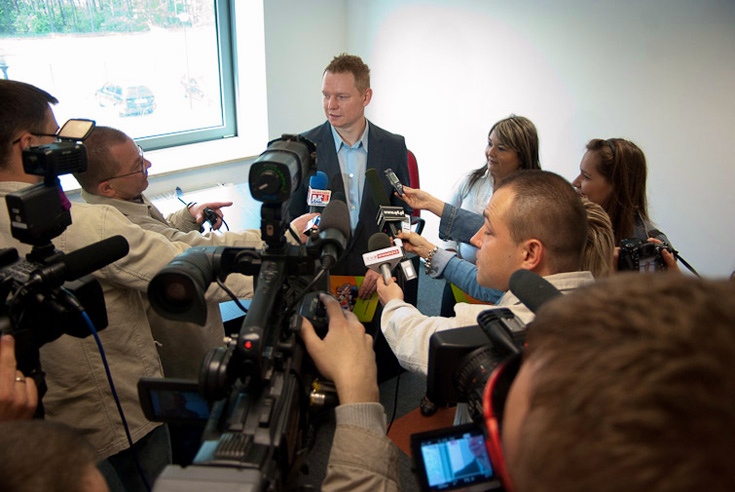Not so long ago, training to meet the press and television reporters was a realm reserved for top business executives only. Now, even the earliest-stage startup can rise to visibility—or be forever lost—through its first media spotlight. So it behooves us all to know the rules early on. Most entrepreneurs that I know admit to a poor first-media interaction, and many are still waiting for the instant replay.
On the social media side, the stakes are just as great. Ask Eric Migicovsky, founder of Pebble, who raised over $10 million on the Kickstarter crowd-funding platform for his relatively low-tech wristwatch with programmed clock faces. Kickstarter may take a bit of the credit for this, but they admit the majority of projects without media attention don’t even approach their funding goals.
There are a lot of expensive public relations and media relations firms out there who can give you the full treatment, but I recommend starting with a good book on the subject, such as “The Media Training Bible” by media training expert Brad Phillips. He provides 101 two-page lessons, which I have divided into 8 learning categories below.
1. Learn the ground rules for traditional media.
Few of us have the background to know when to turn down an interview request, or when it’s more effective to comment “off the record,” or that you should never use the “no comment” approach. Even practical issues, like understanding reporter deadlines and your own editing rights, are critical.
2. Craft messages and message supports.
A message is a one-sentence statement that incorporates 2 things: 1 of your most important points and 1 of your audience’s most important needs or values, with a call to action. Message supports are stories, statistics and sound bites that reinforce your message. Both need to be clear and direct.
3. Make every interview memorable.
The key to any effective interview is to articulate a message or message support in almost every answer you ever give. Speak in complete sentences, aimed at the 12-year-old language level, and skip the acronyms. Avoid tentative phrases like, “We’re trying,” in favor of the stronger, “We are doing.”
4. Answer the tough questions.
You must answer every question, every time, online or on camera—or risk appearing evasive. Yet quickly transition back to the message and supports. In all cases, you must stay cool, avoiding anger, sarcasm or the urge to walk away. Never offer an answer unless you know it’s true; it’s better to say, “I don’t know.”
5. Use appropriate body language and attire.
The main impression you leave with an audience may have little to do with your words. Show energy, eye contact and gestures to enhance the impact of your words. Wear solid colors and make your “look” true to your brand and yourself. People judge you and your company in the first few seconds.
6. How to handle different media formats:
These days the media formats range from email, phone and radio to television and social media, which includes blogs, social networks and video-sharing sites. With social media, you are always “on the record,” and once you say it, it’s out there forever. All of the lessons from traditional media apply, plus more.
7. How to respond to media when in a crisis:
A crisis is an event precipitated by a specific incident that attracts critical media attention and lasts for a definite period of time. It could be a product quality problem or a major customer complaint on Twitter. The challenge is to be prepared and communicate quickly and effectively until it’s over.
8. Prepare, prepare, prepare for every media event.
Even the most experienced executives write down what they need to say and practice for every event. Steve Jobs was a master at this, even though he had years of experience. The result was that every interview or event, online or live, came off naturally and positively. Why do many entrepreneurs think they can “wing it” and get the same results?
Every entrepreneur in this new era of shrinking attention spans, social media overload and sensationalized reporting needs to know how to create positive messages, cut through the noise and motivate audiences through multiple mediums. Don’t wait for a reputation-destroying disaster to start your learning. You won’t get a second chance for a great first impression.
Image credit: CC by Artur Czachowski




